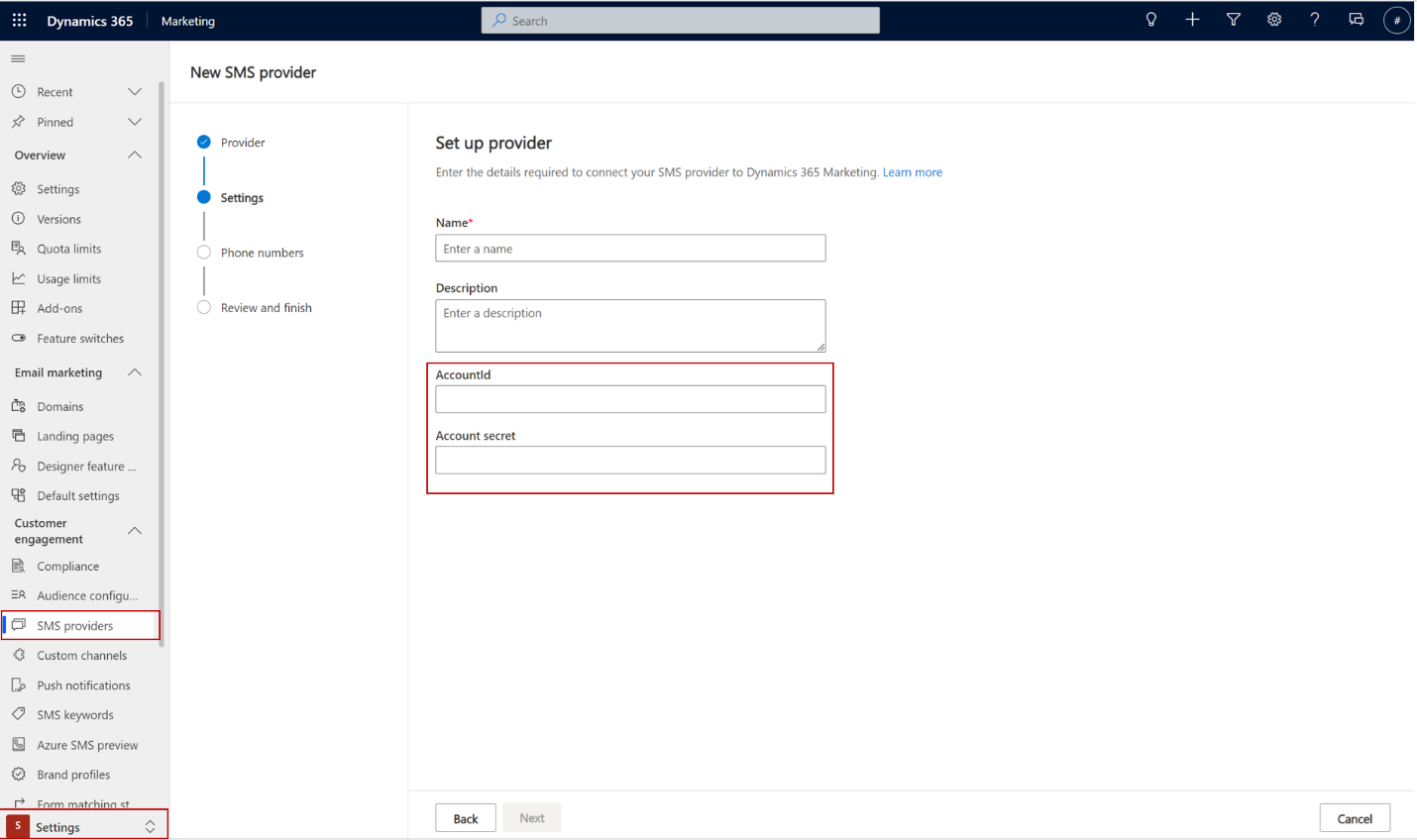Define an extended configuration entity for the channel instance account
Applicable channels: SMS only
When you create a custom SMS channel, you need to define an entity to represent the extended configuration for the channel instance account (msdyn_channelinstanceaccount). For example, you might have a MessageBird account for which you've enabled multiple phone numbers. The channel instance account has a 1:N relationship with the channel instances you created (in this example, the MessageBird phone numbers).
Important
To allow Customer Insights - Journeys to access the extended configuration entity during submission, you need to add Read privileges for the extended configuration entity to the "Cxp Channel Definitions Services User" role.
For each custom channel solution, you need to:
Create a custom entity to represent the extended configuration of the Channel Instance Account entity defined in the base solution.
The name of the entity is assigned to the attribute msdyn_channeldefinitionaccountexternalentity at the channel definition step.
Add a relationship to the base Channel Instance Account entity in the msdyn_extendedentityid attribute.
This attribute is a polymorphic lookup. Here's an example of the relationship in XML:
<?xml version="1.0" encoding="utf-8"?>
<EntityRelationships xmlns:xsi="http://www.w3.org/2001/XMLSchema-instance">
<EntityRelationship Name="msdyn_ChannelInstanceAccount_extendedentityid_cr65f_samplechannelinstanceaccount">
<EntityRelationshipType>OneToMany</EntityRelationshipType>
<IsCustomizable>0</IsCustomizable>
<IntroducedVersion>1.0.0.0</IntroducedVersion>
<IsHierarchical>0</IsHierarchical>
<ReferencingEntityName>msdyn_ChannelInstanceAccount</ReferencingEntityName>
<ReferencedEntityName>cr65f_samplechannelinstanceaccount</ReferencedEntityName>
<CascadeAssign>NoCascade</CascadeAssign>
<CascadeDelete>RemoveLink</CascadeDelete>
<CascadeReparent>NoCascade</CascadeReparent>
<CascadeShare>NoCascade</CascadeShare>
<CascadeUnshare>NoCascade</CascadeUnshare>
<CascadeRollupView>NoCascade</CascadeRollupView>
<IsValidForAdvancedFind>1</IsValidForAdvancedFind>
<ReferencingAttributeName>msdyn_extendedentityId</ReferencingAttributeName>
<RelationshipDescription>
<Descriptions>
<Description description="" languagecode="1033" />
</Descriptions>
</RelationshipDescription>
<EntityRelationshipRoles>
<EntityRelationshipRole>
<NavPaneDisplayOption>UseCollectionName</NavPaneDisplayOption>
<NavPaneArea>Details</NavPaneArea>
<NavPaneOrder>10000</NavPaneOrder>
<NavigationPropertyName>msdyn_extendedentityid_cr65f_samplechannelinstanceaccount</NavigationPropertyName>
<RelationshipRoleType>1</RelationshipRoleType>
</EntityRelationshipRole>
<EntityRelationshipRole>
<NavigationPropertyName>msdyn_ChannelInstanceAccount_extendedentityid_cr65f_samplechannelinstanceaccount</NavigationPropertyName>
<RelationshipRoleType>0</RelationshipRoleType>
</EntityRelationshipRole>
</EntityRelationshipRoles>
</EntityRelationship>
</EntityRelationships>
Create a form to expose the configuration fields.
The form doesn't have to contain attributes like name or description since they come from Customer Insights - Journeys Custom controls. The form is loaded in the Customer Insights - Journeys SMS wizard (settings step). The form ID is assigned to the attribute msdyn_channeldefinitionaccountexternalformid at the channel definition step.
For example, in SMS, the form looks like this:
